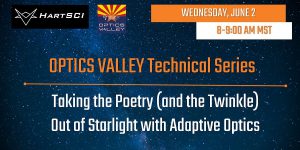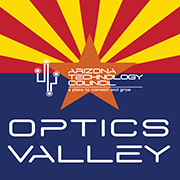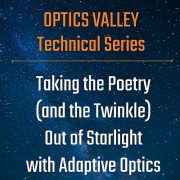
When you’re fortunate enough to find yourself far from city lights, the silent twinkling of the stars in the wide open night sky is magical. But sadly, the atmospheric effects that cause it also severely degrade the quality of images recorded by telescopes. The techniques of adaptive optics, wherein the dynamic optical aberrations induced by the air are measured and corrected in real time, restore high-quality imaging in optical and infrared wavebands.
Adaptive Optics (AO) finds many applications:
- Essential tool for astronomers in the burgeoning field of exoplanet study; it was key to the 2020 Nobel prize in physics for the discovery of the massive black hole at the center of the Milky Way.
- US Department of Defense uses AO to study human-made objects in space.
- Essential to achieving high bandwidth in ground-space laser communications, a field that’s poised to take off like a Falcon 9.
- AO is used clinically in retinal imaging.
- Controls beam shape in the 192 high-energy lasers of the National Ignition Facility.
In this talk, Michael Hart will describe the basic principles and technologies of AO and describe some of its applications in the scientific, commercial, and defense arenas.
About Our Presenter:

Michael Hart studied physics at Oxford University before taking a PhD in Astronomy at the University of Arizona, with an emphasis on optical instrumentation for high resolution imaging. He founded HartSCI in 2008 and he continues to provide technical leadership to the product development teams.
His scientific specialties include adaptive optics, the dynamic compensation of optical image blur, numerical image restoration, and optical remote sensing methods. Dr. Hart is also a faculty member at the University of Arizona’s College of Optical Sciences where he leads a research group and provides student mentoring and graduate-level teaching. He holds several patents in the fields of remote sensing and adaptive optics.
 |
|
 |
|
By training, they are scientists and engineers and as such they approach their work with what the physicist calls first principles. They do this in the fields of imaging, optics, light propagation, and information theory pushing the technological state of the art with their products and solutions. |
|
Optics Valley, a committee of the Arizona Technology Council, is one of the leading clusters for optics, photonics and astronomy in the world. Optics Valley’s mission is to catalyze, convene and connect optics, photonics, astronomy and the supporting business interests throughout Arizona. |
Location
Virtual , Register to Attend
Venue
Virtual Event
Date
June 2, 2021
Time
8:00am - 9:00am
Cost
FREE to Attend
Register

